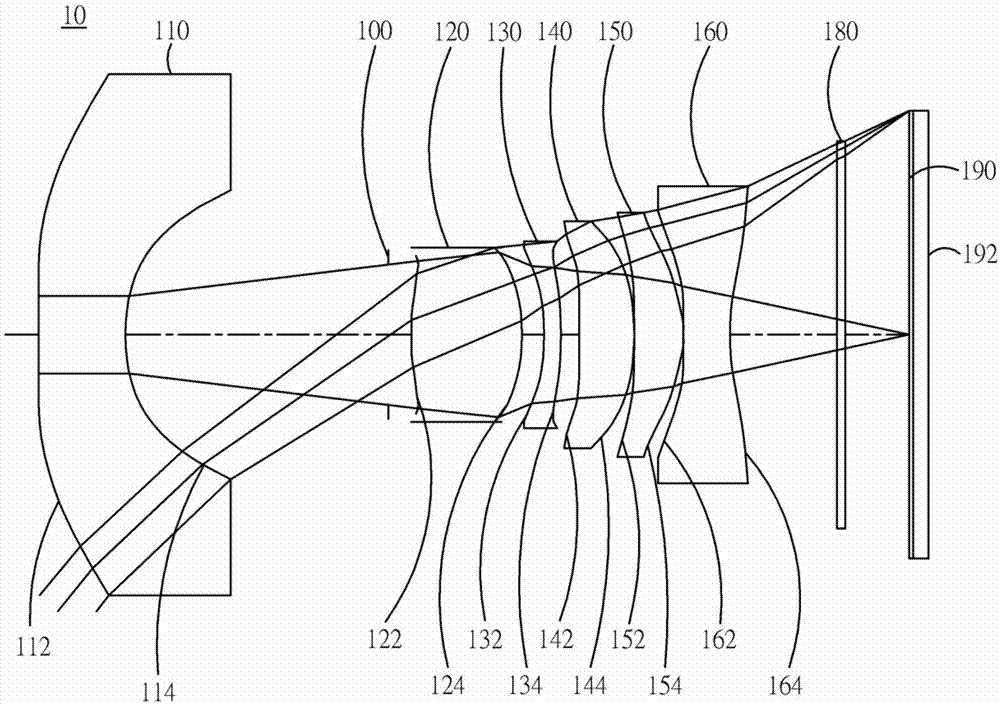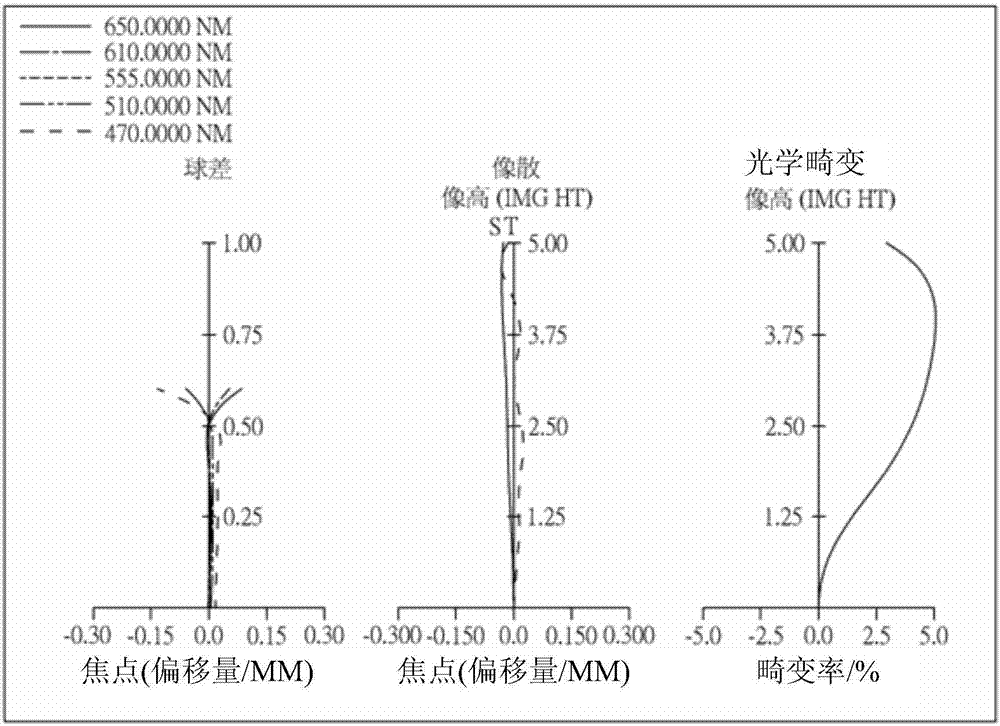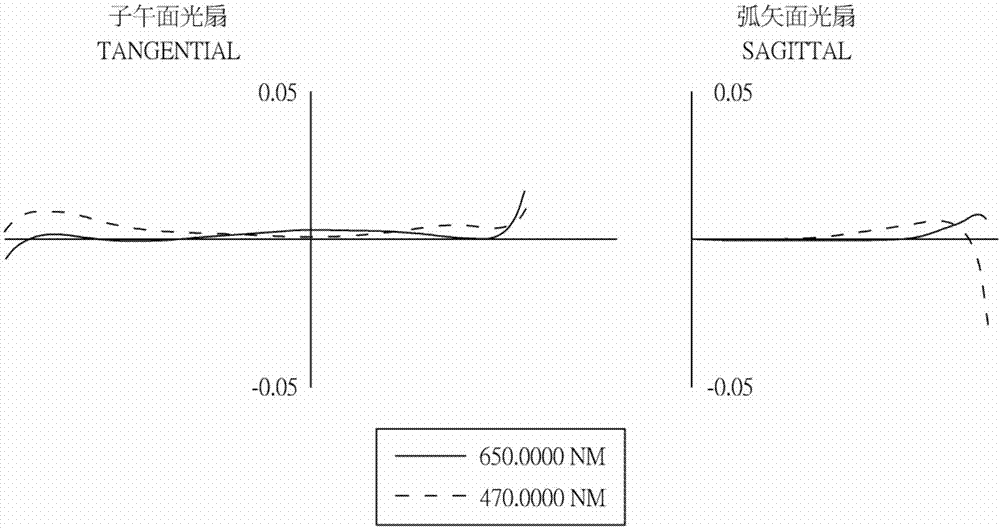Optical imaging system
A technology of optical imaging system and imaging surface, applied in optics, optical components, TV system components, etc., can solve problems such as inability to meet photography requirements, achieve optimal optical path adjustment ability, improve imaging quality, and reduce sensitivity
- Summary
- Abstract
- Description
- Claims
- Application Information
AI Technical Summary
Problems solved by technology
Method used
Image
Examples
no. 1 example
[0220] Please refer to Figure 1A and Figure 1B ,in Figure 1A It shows a schematic diagram of an optical imaging system according to the first embodiment of the present invention, which is composed of six lenses with refractive power and can provide good imaging for visible light and infrared light at the same time, Figure 1B From left to right are the spherical aberration, astigmatism and optical distortion curves of the optical imaging system of the first embodiment. Figure 1C It is the lateral aberration diagram of the meridian plane light fan and the sagittal plane light fan of the optical imaging system of the first embodiment, the longest working wavelength and the shortest working wavelength passing through the edge of the aperture at the 0.7 field of view. Figure 1D It shows the through focus modulation conversion ratio transfer rate diagram (Through Focus MTF) of the central field of view, 0.3 field of view, and 0.7 field of view of the visible light spectrum of ...
no. 2 example
[0292] Please refer to Figure 2A and Figure 2B ,in Figure 2A It shows a schematic diagram of an optical imaging system according to the second embodiment of the present invention, which is composed of seven lenses with refractive power and can provide good imaging for visible light and infrared light at the same time, Figure 2B From left to right are the spherical aberration, astigmatism and optical distortion curves of the optical imaging system of the second embodiment. Figure 2C It is a lateral aberration diagram of the optical imaging system of the second embodiment at a field of view of 0.7. Figure 2D It shows the defocus modulation conversion versus transfer ratio diagram of the central field of view, 0.3 field of view, and 0.7 field of view of the visible light spectrum in this embodiment; Figure 2E It shows the through-focus modulation conversion versus transfer ratio diagrams of the central field of view, 0.3 field of view, and 0.7 field of view of the infra...
no. 3 example
[0317] Please refer to Figure 3A and Figure 3B ,in Figure 3A It shows a schematic diagram of an optical imaging system according to the third embodiment of the present invention, which is composed of six lenses with refractive power and can provide good imaging for visible light and infrared light at the same time, Figure 3B From left to right are the spherical aberration, astigmatism and optical distortion curves of the optical imaging system of the third embodiment. Figure 3C It is a lateral aberration diagram of the optical imaging system of the third embodiment at a field of view of 0.7. Figure 3D The defocus modulation conversion versus transfer rate diagrams of the central field of view, 0.3 field of view, and 0.7 field of view of the visible light spectrum of this embodiment are shown; Figure 3E shows the central field of view, 0.3 field of view of the infrared light spectrum of this embodiment. Through-focus modulation conversion vs. transfer rate plots for FO...
PUM
| Property | Measurement | Unit |
|---|---|---|
| wavelength | aaaaa | aaaaa |
| wavelength | aaaaa | aaaaa |
Abstract
Description
Claims
Application Information
 Login to View More
Login to View More - R&D
- Intellectual Property
- Life Sciences
- Materials
- Tech Scout
- Unparalleled Data Quality
- Higher Quality Content
- 60% Fewer Hallucinations
Browse by: Latest US Patents, China's latest patents, Technical Efficacy Thesaurus, Application Domain, Technology Topic, Popular Technical Reports.
© 2025 PatSnap. All rights reserved.Legal|Privacy policy|Modern Slavery Act Transparency Statement|Sitemap|About US| Contact US: help@patsnap.com



